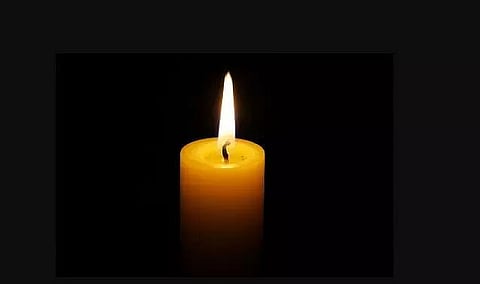
- Home
- Live Blog
- Breaking News
- Top Headlines
- Cities
- NE News
- Sentinel Media
- Sports
- Education
- Jobs

Before I even came to understand the meaning of the word “death,” I lost my father at the tender age of ten. That loss filled my childhood with an unspoken fear: what if God took my mother away too? One day, when my mother went to visit an astrologer with her childhood friend, Dr. Mamoni Roisom Goswami, we sisters anxiously waited for her return. I remember asking her friend with great urgency, “Did the astrologer say how long our mother will live?” Sensing the deep insecurity in my heart, she reassured me, “Your mother will be with you all for a long, long time.” I sighed with great relief. Whether it was childish selfishness or a desperate desire for security, I don’t know—but like fledglings under a wing, the four of us daughters spent our childhood, youth, and adolescence sheltered in our mother’s loving care.
Having lost her husband at just 36, she raised four young daughters with extraordinary strength, sacrifice, and dignity. On the early morning of April 26, 2025, at the age of 89, she passed away peacefully due to age-related ailments.
Born on 29 October 1936 at Chenikuthi, Guwahati, to Late Girish Chandra Goswami and Late Mohinipriya Goswami, my mother pursued her early education at Tarini Charan Chaudhury Higher Secondary School and later at Handique Girls College. She married Suresh Chandra Sharma in 1956 and moved to Shillong with him, where his job was based. Always fond of music, she came into close contact with the family of the renowned musician, Rudra Barua in Shillong. She often narrated, in vivid detail, the stories behind his famous songs like “Poka dhanor maje maje…”, and could recall and sing them even in her final years.
Growing up in a large, warm family, she naturally became deeply engaged in community life. She was an active member of ‘Kristi Kendra’ in Shillong, regularly participating in events such as Durga Puja and Bhaona, through which she instilled in us a deep sense of spiritual and cultural belonging. Even in her later years, she maintained close ties with members of the Assamese community in Shillong.
After the sudden demise of my father only 16 years into their marriage, her life was plunged into darkness. Having grown up as the eldest and most cherished daughter, and having enjoyed a loving marriage, the concept of self-reliance had never crossed her mind. But circumstances changed that.
With four young daughters to care for, she began a new chapter of her life at our home in Kannachal, Guwahati. This period of struggle shaped her courage, resilience, and confidence. Determined to make each of us independent, she took up teaching—first at Bamunimaidam Primary School and later at Uzan Bazar High School, retiring from there in 1997. Simultaneously, she strictly adhered to the austere rituals and customs of a Brahmin widow, particularly during Ambubachi. These customs often irritated us as children, and we protested them as we grew older, even as illness slowly crept into her body.
Devoted to devotional music, she regularly sang in the Naamghar and was adept at singing various traditional forms like Ai Naam and Biya Naam. In 2018, at our request, she compiled her knowledge into a small book titled “Biya Naam aru Aamar Bibah Paddhati” (Wedding Chants and Our Marriage Traditions), preserving an important part of our cultural heritage.
She was a founding member of the Kannachal Naamghar and actively participated in all its religious activities, despite her many household and professional responsibilities. Her lasting bond with our ancestral home in Chaygaon—where she maintained cordial relations for over five decades after my father’s passing—reflects her kind and generous nature. Her contributions to the construction of the public Naamghar at Bhuyapara, and the plaque that bears her name, stand as permanent tributes to her selflessness.
It was her earnest wish to see each of us daughters not only well educated but also professionally established before even thinking about our marriages. That wish was fulfilled, and in our sons-in-law, she found the sons she never had. Surrounded by six grandchildren, two granddaughters-in-law, and a great-granddaughter, she shed tears of fulfillment and gratitude in her final years.
From our mother, we learned the values of honesty, discipline, endurance, compassion, and self-respect. She taught us how to manage both home and career with grace and dedication.
With her passing, we have lost the sheltering shade of the great banyan tree under which we found comfort and peace. Even as we lit her funeral pyre, bidding farewell through our tears, we prayed: may our beloved mother remain an eternal source of courage and inspiration in our lives.
On this day, 5 May 2025, her Adyashraddha (first annual ritual) is observed. I find myself pausing again and again while trying to write these few lines. We may never be able to repay the debt we owe her. But we, her daughters, wholeheartedly acknowledge that whatever we are today is only because of her life of sacrifice, struggle, and unwavering determination. We pray for the eternal peace of her soul.
Dr. Namita Sharma
Also Read: Guwahati Event: Akshat Gupta to Speak at Memorial Lecture May 1
Also Watch: